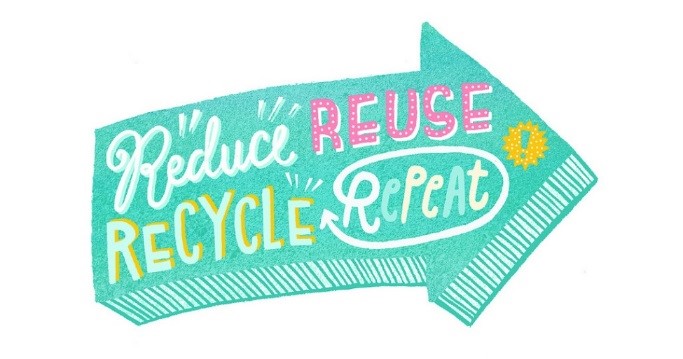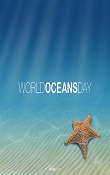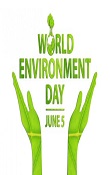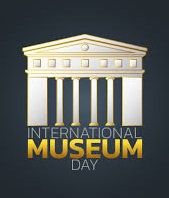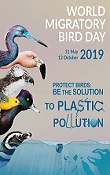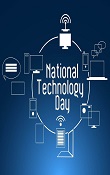 Right from covers handed out by shop vendors to the take-away food that is being packed at restaurants, plastics have come a long way and have now become a part of our daily routine. Food wrappers, telephones, jackets, footwear, toothbrush and every other product around us has certain amount of plastic in it. It would be apt to say that we are surrounded by plastic. The threat posed by this material is often overlooked due to its numerous benefits like durability, strength, affordability and convenience. Our obsession with plastic has increased the toxins on our planet and has resulted in ‘plastic pollution’.
Right from covers handed out by shop vendors to the take-away food that is being packed at restaurants, plastics have come a long way and have now become a part of our daily routine. Food wrappers, telephones, jackets, footwear, toothbrush and every other product around us has certain amount of plastic in it. It would be apt to say that we are surrounded by plastic. The threat posed by this material is often overlooked due to its numerous benefits like durability, strength, affordability and convenience. Our obsession with plastic has increased the toxins on our planet and has resulted in ‘plastic pollution’.
It is our future generation that is bearing the brunt of this. Children are introduced to plastic at a very young age. From toys to spoons and pouches to bags, there is a bit of plastic in everything that is given to them. During the early years, children tend to bite or put the toys in their mouth. Toys, whose chief component is plastic, often harms the child and, its repercussions are noticed only in the later years. Even while packing food, the lunch boxes are plastic, causing chemicals to mix with the food. It may not be possible to do away with plastic entirely, but parents/teachers should make a conscious effort to choose an alternative wherever possible.
This world environment day, with ‘Beat Plastic Pollution’ as the theme, The Teacher is celebrating anti-plastic month by exploring the dangers of plastic and identifying different alternatives to it.
What is plastic?
Plastic is a synthetic material made using chemicals. Despite being durable and easy to use, they are highly non-recyclable and can survive in the environment for almost 500 years.
Why is plastic dangerous?
 Statistics reveal 1 million plastic bottles being purchased every minute, across the world. Not only are these plastic wastes polluting the oceans but are also causing the deaths of many marine animals, eventually leading to their extinction. The plastics in water bodies make their way into our body as well.
Statistics reveal 1 million plastic bottles being purchased every minute, across the world. Not only are these plastic wastes polluting the oceans but are also causing the deaths of many marine animals, eventually leading to their extinction. The plastics in water bodies make their way into our body as well.
Sturdy bottles are often manufactured with the help of chemicals named Bisphenol and Phthalates. Scientists believe that bisphenol has adverse effect on the human body, like inducing toxins or disrupting hormones. Phthalates are known to harm the livers, kidney, lungs and the reproductive system.
Recycling Plastic:
Different plastic products can be recycled to create newer products. Here are some common household plastics that can be recycled to form various other products.
|
Old product
|
Recycled into
|
|
Household plastic bottles and containers
|
New bottles and containers,tables, furniture, playground equipment, bins, etc.
|
|
Bags and wrappers
|
Plastic lumber, fences, playground equipment, etc.
|
|
Water bottles and bottles from juice/soft drinks
|
T-shirts, sweaters, jackets, sleeping bags, newer bottles, etc.
|
|
Bottle caps
|
Batteries for cars, brooms, storage containers, ropes, etc.
|
What can be done to reduce plastic pollution?
1.Refuse plastic
Plastic in any form, from a little spoon to a big container, is equally dangerous.
2.Always carry your own shopping bag
Jute bags, cotton bags or even paper bags are some alternatives to plastic bags.
3.Find an alternative use for any plastic you have
Plastic bottles can be painted and turned into planters or vases. They can also be converted into containers to store salt, pepper or other such ingredients. The bottles can also be cut to form bird feeders.
4.Choose cartons and glass bottles over plastic containers
Cartons and glass bottles are some alternatives to plastic containers as they are more durable, and less harmful.
5.Do not litter the surroundings with plastic covers and bottles.
It is ideal to make use of trash cans/ garbage bins while disposing plastic wrappers or bottles. Littering the surroundings harms not just the surrounding but also the organisms in it.
Cartons and glass bottles are some alternatives to plastic containers as they are more durable, and less harmful.
Do not litter the surroundings with plastic covers and bottles.
Plastic bottles can be painted and turned into planters or vases. They can also be converted into containers to store salt, pepper or other such ingredients. The bottles can also be cut to form bird feeders.
Choose cartons and glass bottles over plastic containers
Jute bags, cotton bags or even paper bags are some alternatives to plastic bags.
Find an alternative use for any plastic you have
Plastic in any form, from a little spoon to a big container, is equally dangerous.
Always carry your own shopping bag
Activities that can be taken up in the school/classroom:
1.Cleanliness drive
Schools can adopt a neighbourhood and the students can volunteer to make it plastic-free
2.Waste Segregation
Students can be taught about waste segregation and can be introduced to the concept of coloured bins.
3.Best out of Waste
Students can be encouraged to turn plastic into works of art. Bottles can be painted or turned into accessories.
4.Skits to create awareness
Students can perform skits and educate the people about plastic, its dangers and how it can be reduced.
5.Idea box
Students can write articles on what they would do to keep the environment clean and how greener do they see the world in 10 years. The best ideas can be implemented by the school.
6.Plastic-free week/month
Students/schools can dedicate a week every month to use plastic-free objects. This can slowly be extended to more number of days.
Though environment day is celebrated on 5 June every year, it is essential that the steps taken on this day are followed throughout the year and are not just limited to one day. By inducing concepts like conservation, sustainable development and greener alternatives, students will be encouraged to do their bit in protecting the environment.
 Right from covers handed out by shop vendors to the take-away food that is being packed at restaurants, plastics have come a long way and have now become a part of our daily routine. Food wrappers, telephones, jackets, footwear, toothbrush and every other product around us has certain amount of plastic in it. It would be apt to say that we are surrounded by plastic. The threat posed by this material is often overlooked due to its numerous benefits like durability, strength, affordability and convenience. Our obsession with plastic has increased the toxins on our planet and has resulted in ‘plastic pollution’.
Right from covers handed out by shop vendors to the take-away food that is being packed at restaurants, plastics have come a long way and have now become a part of our daily routine. Food wrappers, telephones, jackets, footwear, toothbrush and every other product around us has certain amount of plastic in it. It would be apt to say that we are surrounded by plastic. The threat posed by this material is often overlooked due to its numerous benefits like durability, strength, affordability and convenience. Our obsession with plastic has increased the toxins on our planet and has resulted in ‘plastic pollution’. Statistics reveal 1 million plastic bottles being purchased every minute, across the world. Not only are these plastic wastes polluting the oceans but are also causing the deaths of many marine animals, eventually leading to their extinction. The plastics in water bodies make their way into our body as well.
Statistics reveal 1 million plastic bottles being purchased every minute, across the world. Not only are these plastic wastes polluting the oceans but are also causing the deaths of many marine animals, eventually leading to their extinction. The plastics in water bodies make their way into our body as well.